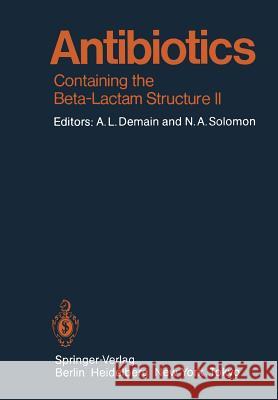Antibiotics: Containing the Beta-Lactam Structure Part II » książka
Antibiotics: Containing the Beta-Lactam Structure Part II
ISBN-13: 9783642689031 / Angielski / Miękka / 2011 / 479 str.
It is quite amazing that the oldest group of medically useful antibiotics, the fJ-Iactams, are still providing basic microbiologists, biochemists, and clinicians with surprises over 50 years after Fleming's discovery of penicillin production by Penicillium. By the end of the 1950s, the future of the penicillins seemed doubtful as resistant strains of Staphylococcus aureus began to increase in hospital populations. However, the development of semisynthetic penicillins provided new structures with resistance to penicillinase and with broad-spectrum activity. In the 1960s, the discovery of cephalosporin C production by Cephalosporium and its conversion to valuable broad-spectrum antibiotics by semisynthetic means excited the world of chemotherapy. In the early 1970s, the 40-year-old notion that fJ-Iactams were produced only by fungi was destroyed by the discovery of cephamycin production by Streptomyces. Again this basic discovery was exploited by the deVelopment of the semisynthetic cefoxitin, which has even broader activity than earlier fJ-Iactams. Later in the 1970s came the discoveries of nocardicins from Nocardia, clavulanic acid from Streptomyces, and the carbapenems from Streptomyces. Now in the 1980s we learn that fJ-Iactams are produced even by unicellular bacteria and that semisynthetic derivatives of these monobactams may find their way into medicine. Indeed, the future of the prolific fJ-Iactam family seems brighter with each passing decade.











